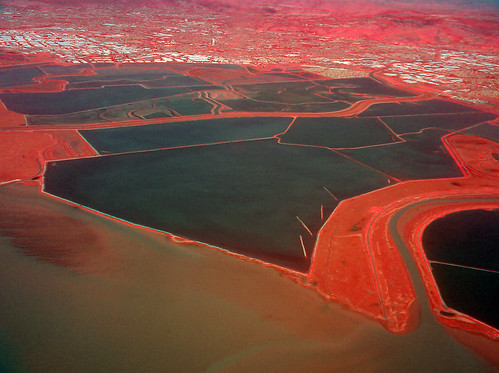Infrared Vegetation Analysis Activity
This activity shows how to produce an infrared composite image such as NRG, where the Red and Green channels of a picture are displayed in green and blue, respectively, and the color red is used to display a new channel -- near-infrared. To learn more about the technique and why it works, read about the near-infrared camera -- and make your own. If you need help, you can always ask the mailing list.
Using Photoshop to do vegetation analysis with your pictures
You can use Adobe Photoshop or another image manipulation program to composite an infrared and visible image to do vegetation/photosynthesis analysis.
To complete this activity, you'll need:
- source images, from the close to the same angle, taken at close to the same time
- one source image from a normal camera
- one source image from a camera modified to take near-infrared images
- to take these images, read more about assembling a near-infrared camera, or try it with these sample files
- Adobe Photoshop or the open source alternative, (GIMP)[http://gimp.org]. For some Macintosh users, Pixelmator is a powerful but lightweight option by an independent software company.
- about 30 minutes the first time; about 10 minutes once you get the hang of it
Video Tutorial
Watch this 10-minute video explaining how to align and composite your two source images. The example photos were taken from an airplane window by Stewart Long. The design files (Adobe Photoshop .psd file and two source images) can be downloaded here.
